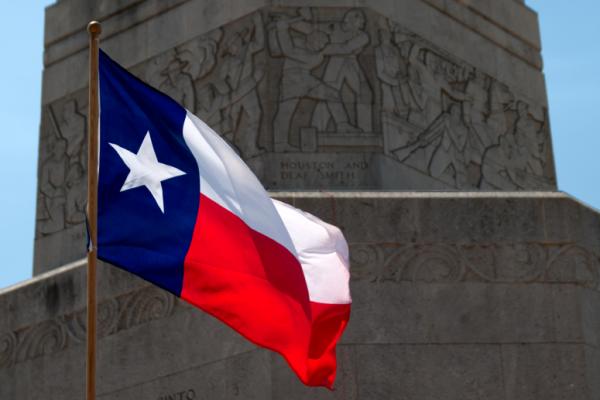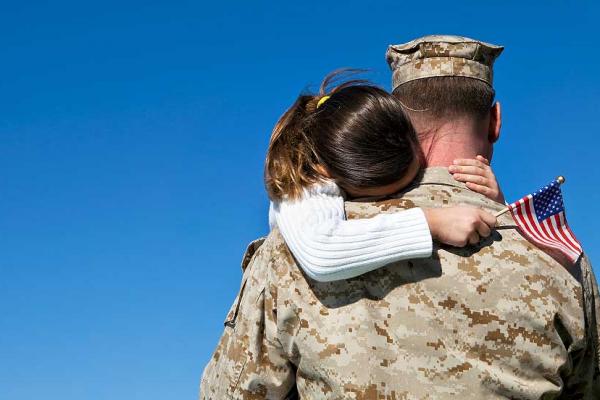St Patrick’s Day occurs on March 17 and is day to remember one of Ireland’s patron saints, St Patrick. It largely celebrates Irish-American culture in the United States, and the use of the color green is predominant.
 Irish related stories, such as one about the Leprechaun’s pot of gold, are often told on St Patrick’s Day.
Irish related stories, such as one about the Leprechaun’s pot of gold, are often told on St Patrick’s Day.
©iStockphoto.com/SharapaAndriy
What do people do?
St Patrick’s Day celebrations concentrate on Irish themed parties, alcoholic drinks and food. People celebrating often dress in green clothing and may consume food and drink dyed green. Irish clubs and pubs often hold special events or promotions. Large street parades are held to mark St Patrick’s Day in cities such as:
- Chicago.
- Boston.
- Houston.
- Philadelphia.
- Pittsburgh.
- Denver.
- Detroit.
- Toronto.
- New York.
- New Orleans.
- Seattle.
Parades are held on Saturday, March 16, in New York during the years when March 17 is a Sunday. The parade is always held on the Sunday before March 17 in many other cities. Some people see St Patrick’s Day as a celebration of the color green, rather than solely focusing on the Irish-American culture. Water is dyed green in public places in some towns. The most notable body of water that was dyed green was the Chicago River in 2005.
People dress in green clothing and eat food, which is either naturally or dyed green, on St Patrick’s Day. Some people go as far as holding green dinner parties where the guests are expected to wear green and eat exclusively green food.
Public life
St Patrick’s Day is not a federal holiday in the United States. Schools, businesses and organizations are open as usual. Public transport systems run on their regular schedules. There may be some local disruption to traffic due to St Patrick’s Day parades. This is particularly true in cities with a large Irish-American population, including New York, New Orleans and Seattle. The parades may be on or around March 17, so it is a good idea to check local sources for the exact location, date and time.
Background
St Patrick is one of Ireland’s patron saints and many Americans with Irish ancestry remember him on March 17. Patrick’s Day is fixed on March 17, but may occasionally be moved by the authorities of the Catholic Church. This happened in 1940, so that the celebrations would not fall on Palm Sunday, and in 2008 to avoid Holy Monday, the last Monday before Easter Sunday.
Symbols
The most common St Patrick’s Day symbol is the shamrock. The shamrock is the leaf of the clover plant and a symbol of the Holy Trinity. Other symbols include:
- Almost anything colored green.
- The green, orange and white flag of the Republic of Ireland.
- Brands of beer associated with Irish culture.
Religious symbols include snakes and serpents. Other Irish-related symbols seen on St Patrick’s Day include the harp, which was used in Ireland for centuries, as well as a mythological creature known as the leprechaun and a pot of gold that the leprechaun hides.
About St. Patrick’s Day in other countries
Read more about St. Patrick’s Day.
Courtesy of DateandTime.com
Many United States residents mark Tax Day as the deadline to file their income tax details to the Internal Revenue Service (IRS). The date is usually on or around April 15. However, this deadline may be extended to accommodate holidays or extreme weather conditions.
 Tax Day is an important date to remember.
Tax Day is an important date to remember.
©iStockphoto.com/joel-t
What do people do?
A large proportion of residents of the USA have to inform the IRS of all income that they received in the previous fiscal year. Some groups, particularly veterans, pensioners and some low-income families, do not have to file a tax return unless they wish to qualify for certain types of income subsidy. Others may wait until the last moment to file their tax return and pay any money they owe. Some people may find that filing a tax return is complicated, while others may feel that they should not have to pay income tax. In the United States, income tax returns may be filed on paper or electronically. Now, people are encouraged to file a return via Internet as this is efficient and reduces the risk of mistakes being made or documents being lost in the post.
Public life
Tax Day is not a federal public holiday in the United States. Schools, post offices, stores and other businesses and organizations are open as usual. Public transport services run to their usual schedules and no extra congestion on highways is to be expected.
Background
Income tax was first introduced in the United States of America in 1861. A rate of three percent was levied on incomes above $800 per year and the resulting revenue was used to help fund the American Civil War effort. However, income tax was seen as unconstitutional and the law was repealed in 1872. The idea of a tax on personal income, at a rate of two percent, was reintroduced in the Revenue Act of 1894, but the legal status of this kind of tax was still unclear. In 1913, the “Sixteenth Amendment” to the Constitution of the United States was ratified. This cleared the way for the modern income tax system in the USA.
The details of the income tax system have changed greatly since 1913. The top rates of tax have varied enormously and were particularly high during the First and Second World Wars and the Great Depression. Individuals and families with very low levels of income do not have to pay income tax and may receive some subsidy via the tax system.
In 1913 Tax Day, or the filing deadline, was fixed on March 1. However, it was moved to March 15 in 1918 and April 15 in 1955, where it has remained since then. If April 15 falls on a Saturday, Sunday or a civil holiday, such as Patriot’s Day, the deadline is extended to the next working day. An extension due to a holiday may only affect certain states. In 2007, the residents of some states were granted an extension due to the disruption to public life in many areas caused by a huge Nor’easter storm. In some years in Washington DC, Emancipation Day may be the reason to extend the deadline for filing an income tax return (Tax Day). In 2007, the observance Emancipation Day in Washington DC had the effect of nationally extending the 2006 income tax filing deadline from April 16 to April 17. This 2007 date change was not discovered until after many forms went to print.
Courtesy of DateandTime.com
San Jacinto Day is a day of state pride for many Texans in the United States on April 21 each year. It commemorates a battle between the Texas Army and Mexican forces about 25 miles from downtown Houston, Texas, on April 21, 1836. This became known as the Battle of San Jacinto and was a turning point for Texas’ independence from Mexico.
 San Jacinto Day is a day for Texans to be proud of their history.
San Jacinto Day is a day for Texans to be proud of their history.
©iStockphoto.com/Lanier
What do people do?
On San Jacinto Day, many people show their pride at being Texan by flying the state flag of Texas, often called the Lone Star Flag, from their homes or other buildings. The main event is a re-enactment of the San Jacinto Battle at the San Jacinto Battleground State Historic Site on a Saturday close to April 21. The re-enactment by hundreds of volunteers is very realistic and includes the use of costume, canons and pyrotechnics. It also forms the center of a festival, which includes a wide range of family entertainment and highlights aspects of Texan history, culture and nature.
Public life
San Jacinto used to be, but is no longer, a public holiday in the state of Texas. Many schools are open, as are post offices, stores and other businesses and organizations. Public transport services run to their usual schedules. Some state offices are closed or partially staffed and services may be restricted. San Jacinto Day is not a public holiday in other parts of the United States on April 21.
Background
Around 1820, the area that is now Texas was part of the newly independent country of Mexico. However, many of the inhabitants wished to form the independent Republic of Texas and, in 1835, they drafted the Texas Declaration of Independence and formed a provisional government. This movement was supported by a wave of volunteers from the United States. In 1836, the president of Mexico, General Santa Anna, travelled to Texas to bring down the uprising. The beginning of his campaign was successful and the Mexican forces managed to regain control of a number of areas.
The Battle of San Jacinto occurred on April 21 in 1836 and was won by Texan forces. The battle lasted a total of 18 minutes and only nine Texan soldiers were killed and 26 wounded. However, hundreds of Mexicans were killed, injured or captured and General Santa Anna was captured in the aftermath of the battle. This event led to negotiations for Texas to become fully independent from Mexico.
Symbols
An important symbol of San Jacinto Day is the flag of the state of Texas, which is flown on homes and other buildings on April 21. This flag is known as the Lone Star Flag and consists of three parts. The flag is one-and-a-half times as wide as it is high. The vertical third, which is hung closest to the flag pole, is dark blue with a single white star and represents loyalty. The top half of the remaining two-thirds of the flag is white, to represent purity, and the lower half red, to represent bravery.
The site of the battle is now known as the San Jacinto Battleground State Historic Site, which is close to the Houston Ship Channel and the cities of La Porte and Baytown. The Historic Site is home to the San Jacinto Monument, which is 570 feet (or about 174 meters) high and the world’s tallest masonry tower. The monument is crowned by a massive stone star that represents the state of Texas.
External links
Texas State Library and Archives Commission: Official Texas State Holidays
Courtesy of DateandTime.com
National Day of Prayer calls on all people of different faiths in the United States to pray for the nation and its leaders. It is held on the first Thursday of May each year.
 People of all faiths take part in National Day of Prayer.
People of all faiths take part in National Day of Prayer.
©iStockphoto.com/ Robert Kohlhuber
What do people do?
Through the efforts of the National Day of Prayer Task Force, more than 35,000 prayer gatherings will be conducted by about 40,000 volunteers across the United States. Several million people are expected to participate in this call to prayer. Some celebrities, such as popular musician and Grammy Award winner Ricky Skaggs, will join millions of Americans in praying for the nation.
Other events in various communities across the United States may include: choirs and bands performing songs relating to prayer; community prayer breakfasts or luncheons; daytime prayer walks; and evening worship and prayer services or gatherings. National Day of Prayer is a time for people of all faiths to pray together in their own way.
Public life
National Day of Prayer is not a public holiday. Schools, post offices, stores and other businesses and organizations are open as usual. Public transport services run to their usual schedules and no extra congestion on highways is to be expected.
Background
In 1775 the Continental Congress allocated a time for prayer in forming a new nation. Over the years, there have been calls for a day of prayer, including from President Abraham Lincoln in 1863. On April 17, 1952, President Harry Truman signed a bill proclaiming the National Day of Prayer into law in the United States. President Reagan amended the law in 1988, designating the first Thursday of May each year as the National Day of Prayer.
The National Prayer Committee was formed in the United States in 1972. It went on to create the National Day of Prayer Task Force, with the intended purpose of coordinating events for the National Day of Prayer. According to the Legal Information Institute, the President shall issue each year a proclamation designating the first Thursday in May as a National Day of Prayer on which the people of the United States may turn to God in prayer and meditation at churches, in groups, and as individuals.
Courtesy of DateandTime.com
National Nurses Day is celebrated annually on May 6 to raise awareness of the important role nurses play in society. It marks the beginning of National Nurses Week, which ends on May 12, the birthday of Florence Nightingale.
 “Advocating, leading, caring” – the slogan of the American Nursing Association (ANA).
“Advocating, leading, caring” – the slogan of the American Nursing Association (ANA).
©iStockphoto.com/AlexRaths
What do people do?
On National Nurses Day celebrations and receptions are held across the United States to honor the work of nurses. Among the most popular activities are banquets, state and city proclamations, and seminars. Many nurses receive gifts or flowers from friends, family members, or patients.
Public life
National Nurses Day and National Nurses Week are observances but they not a public holidays in the United States.
Background
May 12, the final day of National Nurses Week, is the birthday of Florence Nightingale (1820-1910). The English nurse became known as the founder of professional nursing, especially due to her pioneering work during the Crimean War (1853-1856). Due to her habit of making rounds at night, Nightingale became known as “The Lady with the Lamp”.
National Nurses Week was first observed in October 1954, the 100th anniversary of Nightingale’s mission to Crimea. May 6 was introduced as the date for the observance in 1982.
Courtesy of DateandTime.com
Mother’s Day in the United States is annually held on the second Sunday of May. It celebrates motherhood and it is a time to appreciate mothers and mother figures. Many people give gifts, cards, flowers, candy, a meal in a restaurant or other treats to their mother and mother figures, including grandmothers, great-grandmothers, stepmothers, and foster mothers.
 Flowers and other gifts are given to mothers on Mother’s Day.
Flowers and other gifts are given to mothers on Mother’s Day.
©iStockphoto.com/Creativeye99
What do people do?
Many people send cards or gifts to their mother or mother figure or make a special effort to visit her. Common Mother’s Day gifts are flowers, chocolate, candy, clothing, jewelry and treats, such as a beauty treatment or trip to a spa. Some families organize an outing for all of their members or hold a special meal at home or in a restaurant. In the days and weeks before Mother’s Day, many schools help their pupils to prepare a handmade card or small gift for their mothers.
Public life
Mother’s Day is not a federal holiday. Organizations, businesses and stores are open or closed, just as they are on any other Sunday in the year. Public transit systems run to their normal Sunday schedules. Restaurants may be busier than usual, as some people take their mothers out for a treat.
Background
The origins of Mother’s Day are attributed to different people. Many believe that two women, Julia Ward Howe and Anna Jarvis were important in establishing the tradition of Mother’s Day in the United States. Other sources say that Juliet Calhoun Blakely initiated Mother’s Day in Albion, Michigan, in the late 1800s. Her sons paid tribute to her each year and urged others to honor their mothers.
Around 1870, Julia Ward Howe called for Mother’s Day to be celebrated each year to encourage pacifism and disarmament amongst women. It continued to be held in Boston for about ten years under her sponsorship, but died out after that.
In 1907, Anna Jarvis held a private Mother’s Day celebration in memory of her mother, Ann Jarvis, in Grafton, West Virginia. Ann Jarvis had organized “Mother’s Day Work Clubs” to improve health and cleanliness in the area where she lived. Anna Jarvis launched a quest for Mother’s Day to be more widely recognized. Her campaign was later financially supported by John Wanamaker, a clothing merchant from Philadelphia.
In 1908, she was instrumental in arranging a service in the Andrew’s Methodist Episcopal Church in Grafton, West Virginia, which was attended by 407 children and their mothers. The church has now become the International Mother’s Day Shrine. It is a tribute to all mothers and has been designated as a National Historic Landmark.
Mother’s Day has become a day that focuses on generally recognizing mothers’ and mother figures’ roles. Mother’s Day has also become an increasingly important event for businesses in recent years. This is particularly true of restaurants and businesses manufacturing and selling cards and gift items.
About Mothers’ Day in other countries
Read more about Mothers’ Day.
Courtesy of DateandTime.com
Many Americans celebrate Armed Forces Day annually on the third Saturday of May. It is a day to pay tribute to men and women who serve the United States’ armed forces. Armed Forces Day is also part of Armed Forces Week, which begins on the second Saturday of May.
 A member of the US armed forces hugs his daughter.
A member of the US armed forces hugs his daughter.
©iStockphoto.com/videodet
What do people do?
Many events across the United States take place on Armed Forces Day to honor Americans in uniform who served their country in times of war and peace. Those who are honored on this day include people who serve the Army, Navy, Marines, Air Force and Coast Guard. National Guard and Reserve units may celebrate Armed Forces Day/Week over any period in May because of their unique training schedules. Events and activities may include:
- Multi-service military displays in areas open for the public.
- Various educational activities that teach children about the armed forces.
- “Support the Troops” themed motorcycle rides.
- Large parades and other local celebrations.
Certain types of music are also played at Armed Forces Day events, including at memorials and at cemeteries, as a way to respect those in the armed forces who died for their country. For example, buglers have played a bugle call, known simply as Taps, on Armed Forces Day in recent years. Taps is usually sounded by the United States military at events such as flag ceremonies, memorial services and funerals.
Public life
Traffic and parking may be affected in areas where large-scale events are held for Armed Forces Day.
Background
On August 31, 1949, Louis Johnson, who was the United States’ Secretary of Defense, announced the creation of an Armed Forces Day to replace separate Army, Navy and Air Force Days. The event stemmed from the armed forces’ unification under one department – the Department of Defense. The Army, Navy and Air Force leagues adopted the newly formed day. The Marine Corps League declined to drop support for Marine Corps Day but supports Armed Forces Day too.
The first Armed Forces Day was celebrated on Saturday, May 20, 1950. The theme for that day was “Teamed for Defense”, which expressed the unification of all military forces under one government department. According to the U.S. Department of Defense, the day was designed to expand public understanding of what type of job was performed and the role of the military in civilian life.
Armed Forces Day was a day for the military to show “state-of-the-art” equipment to Americans. It was also a day to honor and acknowledge Americans in the armed forces. Parades, open houses, receptions and air shows were held at the inaugural Armed Forces Day. Armed Forces Day is still celebrated nationwide today and is part of Armed Forces Week.
Symbols
Posters and other material used to promote Armed Forces Day often show images of Americans in the armed services dressed in their uniforms. Some posters show a collage of images, including images of those in the armed forces with their families or friends, as well as the United States Flag.
Themes
Some themes that were used for Armed Forces Day in the past included:
- Appreciation of a Nation
- Dedication and Devotion
- Freedom Through Unity
- Liberty
- Patriotism
- Power for Peace
- Prepared to Meet the Challenge
- Security
- Special Opportunity for Thanks
- Teamed for Defense
These are only a few examples, and not a full list, of the Armed Forces Day themes in previous years.
Courtesy of DateandTime.com
Memorial Day is observed on the last Monday of May. It was formally known as Decoration Day and commemorates all men and women, who have died in military service for the United States. Many people visit cemeteries and memorials on Memorial Day and it is traditionally seen as the start of the summer season.
 Memorial Day remembers those who died serving the United States military.
Memorial Day remembers those who died serving the United States military.
©iStockphoto.com/ Alan Crosthwaite
What do people do?
It is traditional to fly the flag of the United States at half mast from dawn until noon. Many people visit cemeteries and memorials, particularly to honor those who have died in military service. Many volunteers place an American flag on each grave in national cemeteries. Memorial Day is combined with Jefferson Davis’ Birthday in Mississippi.
Memorial Day has become less of an occasion of remembrance. Many people choose to hold picnics, sports events and family gatherings on this weekend. This day is traditionally seen as the start of the summer season for cultural events. For the fashion conscious, it is seen as acceptable to wear white clothing, particularly shoes from Memorial Day until Labor Day. However, fewer and fewer people follow this rule and many wear white clothing throughout the year.
Public life
Memorial Day is a federal holiday. All non-essential Government offices are closed, as are schools, businesses and other organizations. Most public transit systems do not run on their regular schedule. Many people see Memorial Day weekend as an opportunity to go on a short vacation or visit family or friends. This can cause some congestion on highways and at airports.
Background
Memorial Day started as an event to honor Union soldiers, who had died during the American Civil War. It was inspired by the way people in the Southern states honored their dead. After World War I, it was extended to include all men and women, who died in any war or military action.
Memorial Day was originally known as Decoration Day. The current name for this day did not come into use until after World War II. Decoration Day and then Memorial Day used to be held on May 30, regardless of the day of the week, on which it fell. In 1968, the Uniform Holidays Bill was passed as part of a move to use federal holidays to create three-day weekends. This meant that that, from 1971, Memorial Day holiday has been officially observed on the last Monday in May. However, it took a longer period for all American states to recognize the new date.
Courtesy of DateandTime.com
People across the United States celebrate Flag Day on June 14 each year to honor the United States flag and to commemorate the flag’s adoption. On the same day, the United States Army celebrates its birthday.
 Flag Day honors the United States flag.
Flag Day honors the United States flag.
©iStockphoto.com/ RiverNorthPhotography
What do people do?
Flag Day falls within National Flag Week, a time when Americans reflect on the foundations of the nation’s freedom. The flag of the United States represents freedom and has been an enduring symbol of the country’s ideals since its early days. During both events, Americans also remember their loyalty to the nation, reaffirm their belief in liberty and justice, and observe the nation’s unity.
Many people in the United States honor this day by displaying the American flag at homes and public buildings. Other popular ways of observing this holiday include: flag-raising ceremonies; Flag Day services; school quizzes and essay competitions about the American flag; musical salutes; street parades; and awards for special recognition.
Organizations such as The National Flag Day Foundation are actively involved in coordinating activities centered on the event and keeping the flag’s traditions alive. Following Flag Day is Honor America Days, a 21-day period through to Independence Day (July 4) to honor America. During this period, people hold public gatherings and activities to celebrate and honor the nation.
Public life
Although Flag Day is a nationwide observance, it is not a public holiday in many parts of the United States. It is a legal holiday in a few areas in the USA, such as Montour County in Pennsylvania.
Background
On June 14, 1777, the Continental Congress replaced the British symbols of the Grand Union flag with a new design featuring 13 white stars in a circle on a field of blue and 13 red and white stripes – one for each state. Although it is not certain, this flag may have been made by the Philadelphia seamstress Betsy Ross, who was an official flag maker for the Pennsylvania Navy. The number of stars increased as the new states entered the Union, but the number of stripes stopped at 15 and was later returned to 13.
In June 1886 Bernard Cigrand made his first public proposal for the annual observance of the birth of the flag when he wrote an article titled “The Fourteenth of June” in the old Chicago Argus newspaper. Cigrand’s effort to ensure national observance of Flag Day finally came when President Woodrow Wilson issued a proclamation calling for a nationwide observance of the event on June 14, 1916. However, Flag Day did not become official until August 1949, when President Harry Truman signed the legislation and proclaimed June 14 as Flag Day. In 1966, Congress also requested that the President issue annually a proclamation designating the week in which June 14 occurs as National Flag Week.
The President is requested to issue each year a proclamation to: call on government officials in the USA to display the flag of the United States on all government buildings on Flag Day; and to urge US residents to observe Flag Day as the anniversary of the adoption on June 14, 1777, by the Continental Congress of the Stars and Stripes as the official flag of the United States.
Symbols
The American flag, also nicknamed as “Old Glory” or “star-spangled banner”, has changed designs over the centuries. It consists of 13 equal horizontal stripes of red (top and bottom) alternating with white, with a blue rectangle in the canton bearing 50 small, white, five-pointed stars. Each of the 50 stars represent the 50 states in the United States and the 13 stripes represent the original 13 colonies that became the first states in the Union.
Courtesy of DateandTime.com
